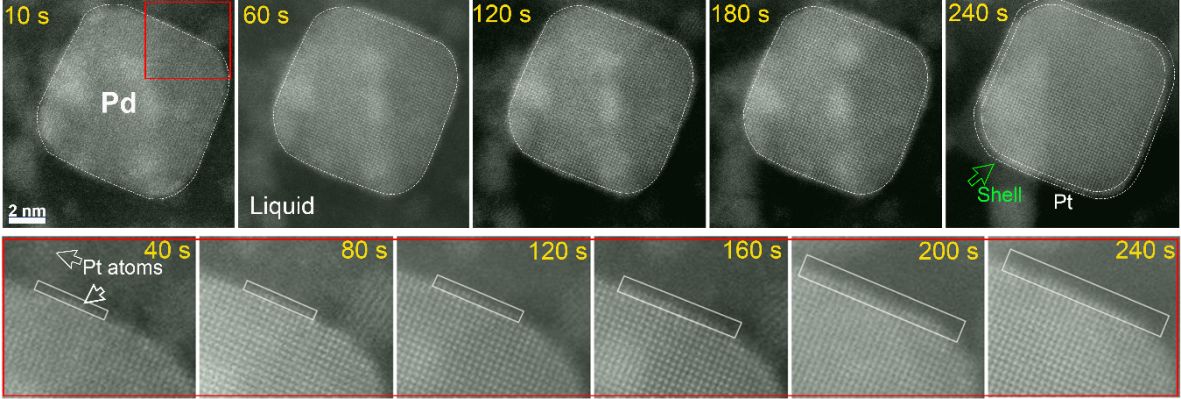Liquid-Phase Microscopy
Graphene Liquid Cells for High Resolution Imaging in Volatile Liquids
Recent advances in liquid phase scanning transmission electron microscopy (LP-STEM) have enabled in situ observations of processes in liquid phase at increasingly high resolution. The commercially available liquid-cell holders are most commonly used for TEM analyses in liquid phase. However, using this method, atomic resolution imaging is extremely challenging since its standard setup results in liquid-cells of several hundred nanometers thickness. Graphene liquid cells (GLCs) in contrast enable the encapsulation of very thin (< 100 nm) liquid samples between two thin graphene films, hence making atomic resolution observations feasible. Therefore, we employ GLCs to investigate dynamic processes in water or other solvents at the atomic scale such as e.g. the evolution of Pt-Pd core-shell nanocrystals or CdS quantum dots (QDs). For details see, e.g., W. Dachraoui, M. I. Bodnarchuk, R. Erni, ACS Nano 16 (9), 14198-14209 (2022).

Liquid-Phase STEM in Ionic Liquids
Besides conventional LP-STEM methods in water and solvent-based media, an alternative approach using ionic liquids has proven to be extraordinarily useful to realize high resolution imaging in a liquid phase. In this approach, tiny droplets or thin films of ionic liquid containing the sample of interest are examined in the microscope without encapsulation, whereas the motion of single atoms in the liquid during dynamic processes can be observed and recorded in situ. Moreover, the speed of dynamic processes in ionic liquids can be manipulated by in situ heating if ionic liquids with suitably temperature-dependent viscosities
Exemplary sketch of an ionic liquid droplet within which CdS QDs and single atoms are recorded in situ by annular dark field scanning transmission electron microscopy (ADF-STEM). The movie shows a short sequence of the dynamics during CdS QD formation.
In addition to their use as a methodological tool, ionic liquids are likewise highly interesting in view of their use as solvents for efficient, eco-friendly and custom-tailored nanoparticle synthesis processes. The current understanding and knowledge on ionic liquids is however not sufficient yet to enable the application of ionic liquids in industrial relevant synthesis approaches such as e.g. for quantum dot production. Therefore, we also aim at exploring the interactions of ionic liquids with nanoparticles, their influence on particle formation processes and also their stability under electron irradiation.
-
Share
